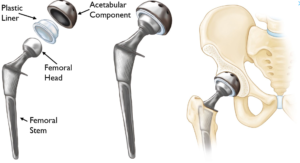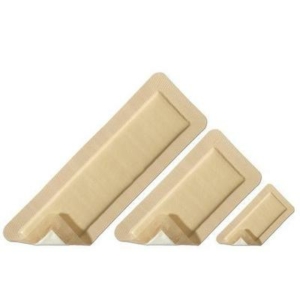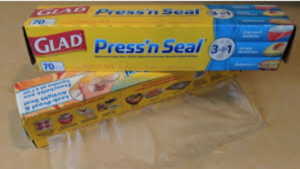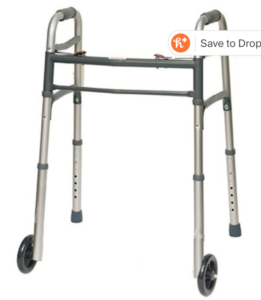PATIENT’S GUIDE to TOTAL HIP REPLACEMENT
STEP 1: MAKE DECISION for TOTAL HIP REPLACEMENT (THR) also called TOTAL HIP ARTHROPLASTY (THA)
When quality of life is impaired by HIP arthritis, make the decision for total HIP replacement. Identify a co-pilot to read the blog.
STEP 2: MEET DR. GALLAGHER IN CLINIC
Meet with Dr. Gallagher to discuss THA and pick a date for your surgery. Surgery days are Mondays, Thursdays, sometimes Wednesday PMs. MOST THAs are done as SAME DAY OUTPATIENT surgery, usually in a surgery center (PINNACLE SURGERY CENTER). However, sometimes patients require a hospital setting (ASCENSION SETON MEDICAL CENTER AUSTIN).
STEP 3: GET LABWORK DONE
Lab work and office visit needed within 60 days of your desired surgery date. Lab work is either done at a SETON hospital PERIOPERATIVE SURGICAL HOME (PSH) clinic, CPL, or by your PCP usually within 30 days of your surgical date.
STEP 4: DAY OF SURGERY
ARRIVE: at PINNACLE SURGERY CENTER or ASCENSION SETON MEDICAL CENTER AUSTIN 1.5-2 hours prior to surgery. You’ll check in, go to a private pre-op room, get changed into a gown and mesh lower undergarments, get an IV from the pre-op nurse, and take pre-op pain medicine (usually celecoxib (Celebrex) 400mg, acetaminophen (Tylenol) 1000mg, pregabalin (Lyrica) 75mg, and tramadol (Ultram) 50mg).
- The anesthesia nerve block team:
- Will perform 2 “single shot” injections using medium length acting numbing medicine, near your hip/groin (directed at the lateral femoral cutaneous nerve (LFCN) and pericapsular nerve group block (PENG).
Most side effects post-op are due to narcotic pain medication so the strategy for pain management is to numb as many nerves around the hip as possible so narcotics aren’t needed, or only used for breakthrough pain.
- NEXT – DR. GALLAGHER will visit the patient in PREOP and MARK the CORRECT HIP with a PEN.
THEN THE SPINAL: you will be wheeled into the OR. The OR table is in the center of the room and is well padded but very narrow. You’ll be asked to transfer over to the OR table and sit on the edge of the table so anesthesia can place the spinal. Spinal anesthesia is preferred over general anesthesia as overall complications are diminished with the spinal. You don’t have the cognitive delay you get with the general, and spinal anesthesia does not affect your driving ie braking response time, so you can drive after surgery when you are not on narcotics and are confident in your ability to hit the brakes (2 weeks average).

ARCH YOUR BACK LIKE YOU’RE
CANNONBALLIN’ INTO A POOL!
OR
AN ANGRY CAT!
NEXT I.V. SEDATION: YOU LIE DOWN AND GENTLY DRIFT OFF TO twilight SLEEP using IV propofol sedation like given for colonoscopy AND TAKE A 1.5 HOUR NAP.
THE SURGERY: The SuperPATH (SUPERIOR APPROACH PERCUTANEOUSLY ASSISTED TOTAL HIP) aka SUPERIOR APPROACH is used for all patients. It’s the least invasive approach for total hip replacement. READ ABOUT THE SUPERPATH APPROACH HERE.

The implant make and model I usually use is the Biomet G7 cup and Taperloc stem. They are made of titanium alloy. The cup has a polyethylene liner (plastic) and the stem has a ceramic or metal ball attached.
These implants have not had any recall to date. If you search online for any orthopedic implant, a list of lawyer pages will result from legal firms fishing for unhappy patients. HIP replacements can last 35+ years.

There will be a “FANCY BANDAID” (4″x10″ Island Border Dressing) covering the incision for 7 days. Patients should purchase 1 or 2 of these dressings to use at home if the first one becomes 50% saturated, or use gauze and medical paper tape.
 Press ‘n’ Seal Seran Wrap is used to cover this “waterproof” bandage during showers to prevent any moisture from getting on the incision.
Press ‘n’ Seal Seran Wrap is used to cover this “waterproof” bandage during showers to prevent any moisture from getting on the incision.
NO SUBMERSION of the INCISION UNTIL SCAB GONE! (about 4 weeks postop)
THE RECOVERY ROOM ie PACU (POST-ANESTHESIA CARE UNIT): Here you wait for the SPINAL to wear off and legs to start moving/wake up. AVOID narcotics if offered by nursing as they will cause nausea/vomiting/constipation/dizziness with standing and delay going home. ASK for oral tramadol first if having pain or IV toradol.
STAND and WALK with RECOVERY ROOM NURSES OR PHYSICAL THERAPISTS for gait training with a walker.
The walker will be provided. YOU ARE FULL WEIGHT BEARING WITH THE WALKER.
WALK 50 FEET AND GO HOME!
STEP 5: READ TOTAL JOINT PAIN CONTROL PROTOCOL HERE.
NO FORMAL PHYSICAL THERAPY for 10-14 DAYS POSTOP. SWELLING MANAGEMENT IS THE FOCUS AND LIMITING YOUR STEP COUNT. PERFORM ICING, ELEVATION and HOME EXERCISES.
Your bone will grow into the pores on the implant. This takes 6-8 weeks. So no impact activities (running, cycling on the road) suggested for 12 weeks. YES YOU CAN RUN ON YOUR HIP REPLACEMENT AFTER 12 WEEKS! THERE ARE NO RESTRICTIONS ON MOVEMENT! ONLY SUGGESTION IS TO LIFT HEAVY ITEMS BY SQUARING OFF AND LIFTING BETWEEN THE KNEES, NOT TO THE OUTSIDE OF YOUR BODY.
STEP 6: READ TOTAL HIP REPLACEMENT: WHAT TO EXPECT AFTER DISCHARGE HOME HERE.
